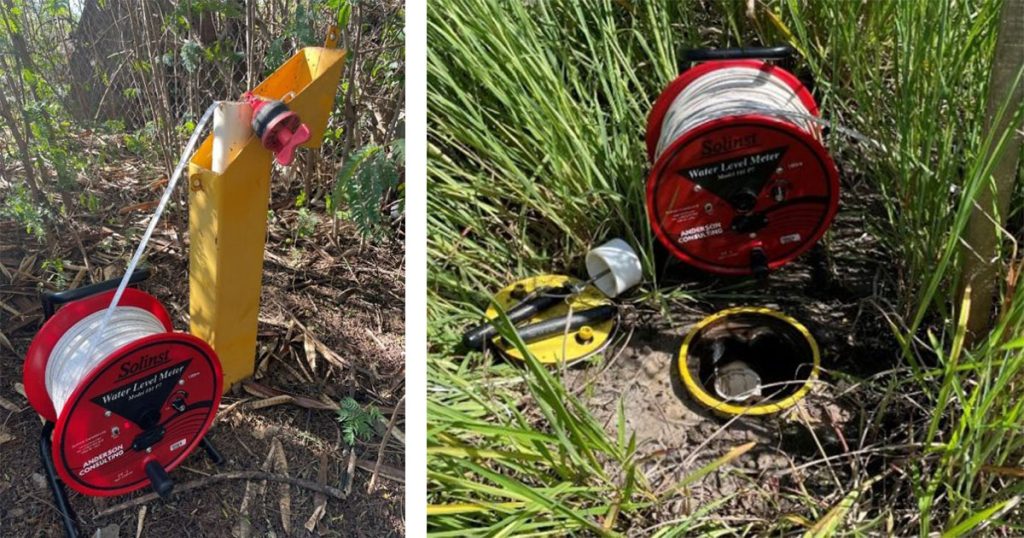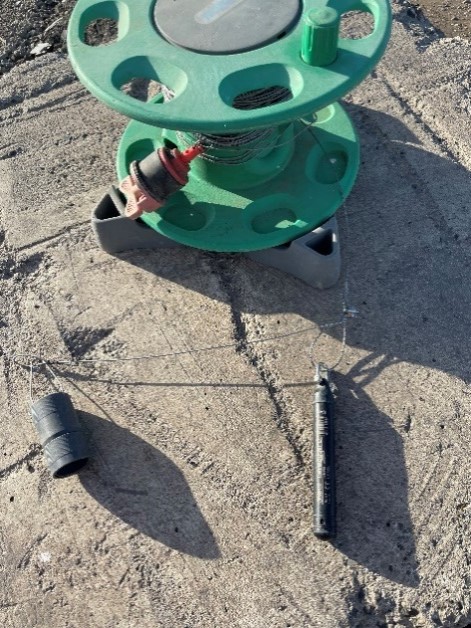After a significant rainfall event in early 2022, it was found that groundwater levels at a landfill site in southeast Queensland, Australia had risen several metres above any previously recorded levels.
As such, the operators of the landfill contracted Anderson Consulting to assist with site planning and works. This included a review of the existing groundwater data and a request for advice on operation planning.
The existing groundwater level data for the landfill only consisted of compliance monitoring data that was collected every three months. This “snapshot” of data limited the assessment of the groundwater trends (was it still rising, decreasing or steady?) and site responses to the continual rainfall (was it responding and if so, what was the timing of the responses?).
Anderson Consulting proposed the installation of Solinst Levelogger 5 water level dataloggers across the groundwater monitoring network. The network consists of sixteen groundwater monitoring wells. The Leveloggers and equipment were supplied by HydroTerra, environmental monitoring specialists and exclusive distributor of Solinst products in Australia.
Solinst Levelogger 5 dataloggers were selected because of their:
- Robustness (Anderson Consulting have used Leveloggers continually for over six years in a multitude of situations, environments, and conditions)
- Accuracy
- Ability to expand with Direct Read Cables and Telemetry in the future
- Long battery life
- Simple PC interface and the ability to use a Solinst DataGrabber 5 to download data rapidly (without the need for a field computer)
The Leveloggers were deployed with a 10-minute logging rate. Over the next few months (with rainfall events still occurring) the collected data provided an important understanding of groundwater characteristics – in particular, each of the monitoring well’s responses to rainfall.
The data allowed analysis and determination of groundwater recharge locations, aquifer types, and groundwater decay (recession) rates. Based on this understanding, planning for the operations was able to be made based on known data, rather than speculation or interpolation between quarterly compliance monitoring.
Based on the high quality of the data, and subsequent understanding gained from the groundwater dataloggers, the site operators requested Anderson Consulting provide information on the behavior of surface waters (in particular, sediment basins).
Four more Solinst Levelogger 5 dataloggers were deployed at the landfill site. The water level data was used alongside a known survey (stage-storage) of the water bodies to understand volumetric changes due to rainfall events, evaporation, losses, and pumping. From this information, site-specific stage runoff factors and pumping curves could be calculated.
The operators then requested dataloggers to augment the current leachate level monitoring system at the site. Again, Solinst Levelogger 5 dataloggers were chosen. Three Leveloggers have been deployed, with a further five to be installed in early 2023. The site operator is considering adding telemetry to these units to provide easy access to the well data remotely.
Overall, the introduction of Solinst Levelogger 5 dataloggers to the site has allowed for:
- More detailed monitoring and analysis of groundwater, surface water, and leachate
- A clearer picture of the workings and interactions of water (rainfall, runoff, recharge, and infiltration)
- Decision-making to be based on real-time data
The original article was written by Chris Anderson, Principal Engineer and Scientist with Anderson Consulting.


